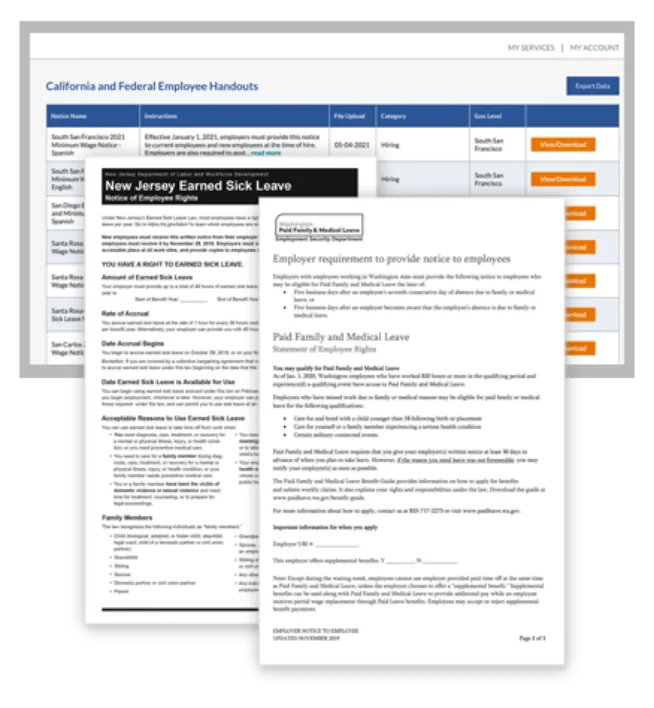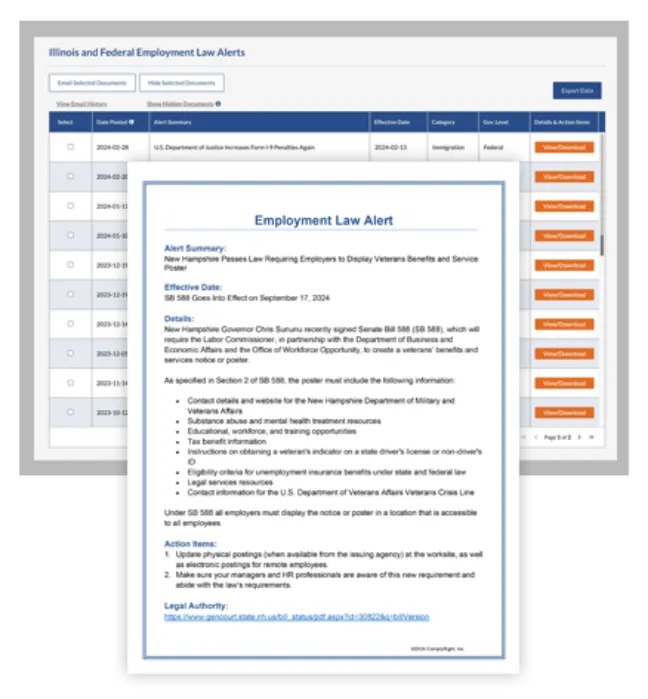When discussing employee pay, the terms minimum wage, prevailing wage and living wage are often used interchangeably — but they mean very different things. Understanding the distinction is essential, especially if you're an employer navigating complex wage requirements across states, cities or industries.
Minimum Wage Serves as the Legal Baseline
Minimum wage is the lowest hourly rate employers are legally allowed to pay under the Fair Labor Standards Act (FLSA). The current federal minimum wage is $7.25 per hour, but 30 states and Washington, D.C. have established higher minimums. When federal, state or local rates differ, employers must pay the highest applicable rate.
States with Highest Minimum Wages (Effective Jan. 1, 2025):
- Washington – $16.66
- California – $16.50
- Connecticut – $16.35
- New Jersey (6+ employees) – $15.49
- Massachusetts – $15.00
- Colorado – $14.81
What determines a state or local minimum wage? While many factors are involved, one commonly used benchmark is the Consumer Price Index (CPI). The CPI measures the average change over time in the prices paid for consumer goods and services like food, transportation and medical care. This measurement can influence government decisions on minimum wage increases, as well as how employers determine cost-of-living adjustments.
Prevailing Wage for Government Contract Standards
Prevailing wage applies to workers performing services on government contracts. The purpose is to prevent contractors from undercutting wages to win bids, especially in public projects. Prevailing wages are typically higher than standard minimum wages. In fact, as of January 2025, certain federal contractors must pay at least $13.30/hour.
The Davis-Bacon Act of 1931 requires that all laborers, contractors, and subcontractors working on federal public works projects over $2,000 be paid a prevailing wage. This includes not just construction workers, but also building service providers such as janitors, gardeners and security guards. States may also set their own prevailing wage laws, which can apply to temporary, part-time, seasonal workers and even independent contractors, depending on local definitions.
Let our in-house legal team monitor wage changes so you can stay focused on running your business with confidence.
Living Wage as a Measure of Economic Sufficiency
A living wage refers to the income needed for an individual or family to meet basic living expenses — such as housing, food, healthcare, childcare and transportation — based on local cost-of-living. Unlike minimum wage, it’s not a legal requirement but often enters public policy debates around income adequacy and poverty.
For example, according to the Living Wage Calculator, a working adult with two children in Seattle, WA, would need to earn $68.88/hr. to cover basic living expenses (vs. $42.49/hr. in Memphis, TN, for the same scenario).
While advocates argue for raising the federal minimum wage to bring more workers closer to a living wage, many small businesses are concerned about how significantly higher wages might impact their ability to operate profitably.
Keep Current with the Minimum Wage Monitor™ Premium Service
Whether your business is private, public or a federal contractor, you're responsible for meeting the minimum or prevailing wage required in each jurisdiction where you operate.
Staying up to date is easier with the Minimum Wage Monitor™ Premium Service. You’ll get:
- Current, historical and future minimum wage rates by state, county and city
- An interactive, color-coded map updated in real time
- Automated email alerts when wage laws change







